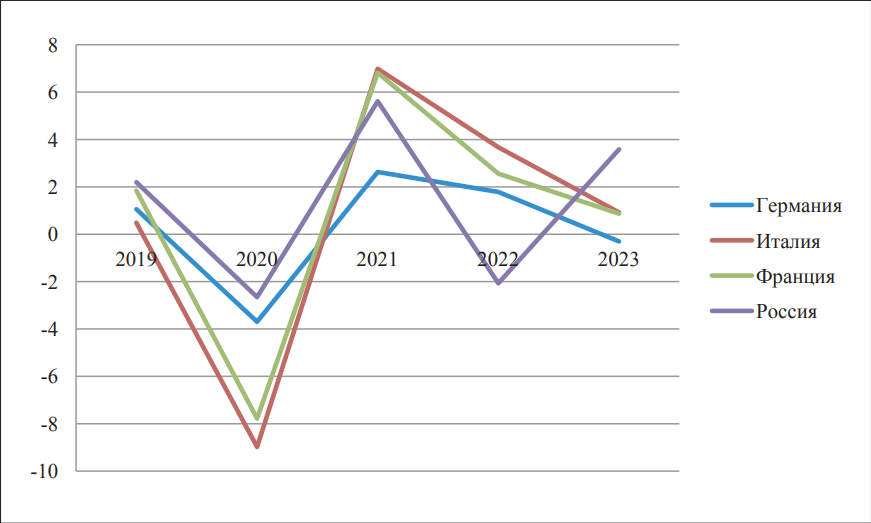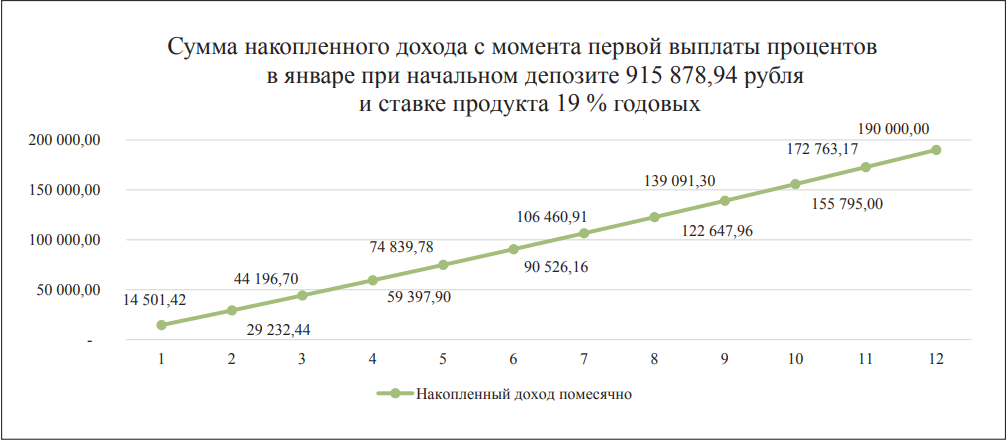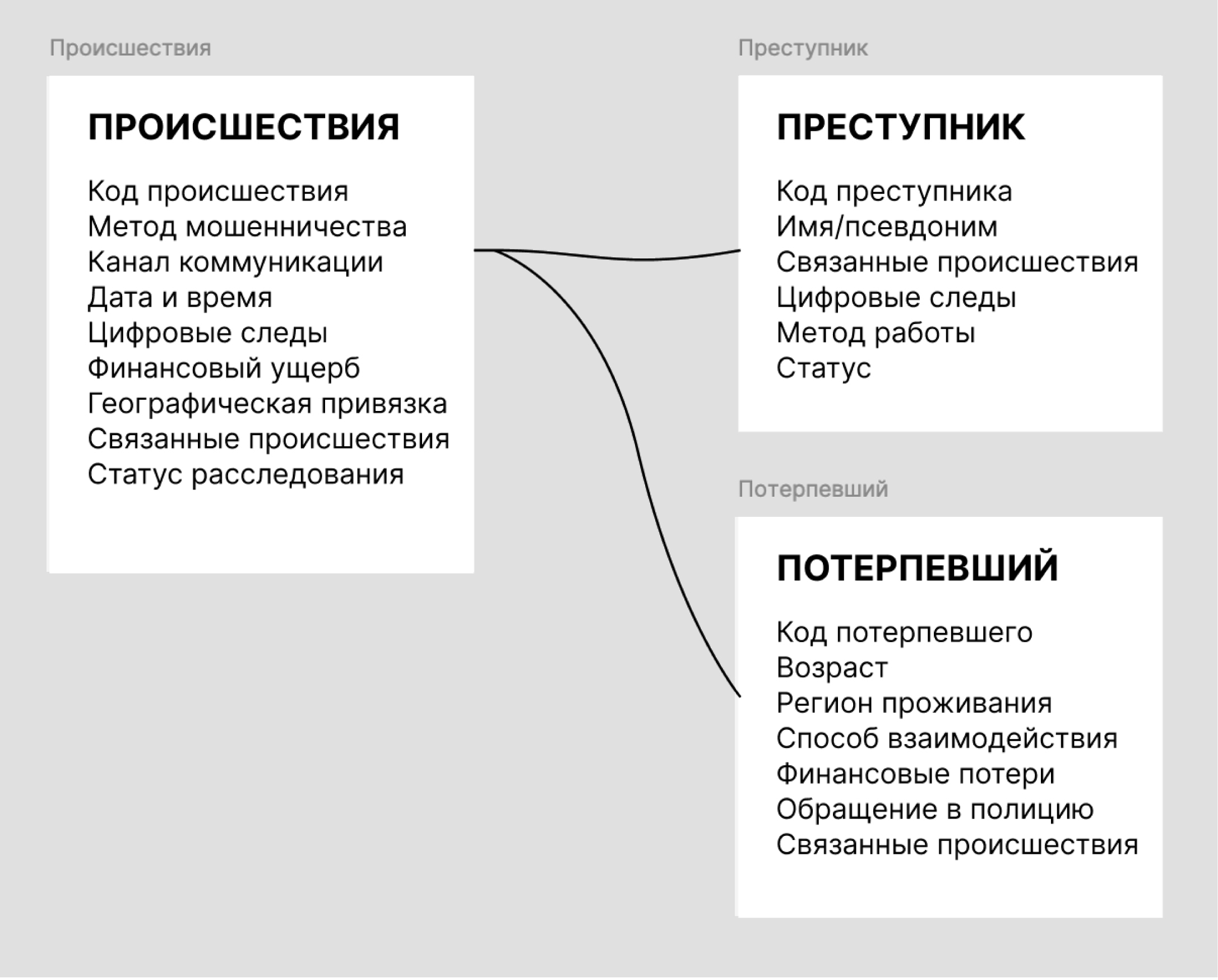ECONOMICS
Dollar exchange rate analysis requires the involvement of relevant methods, which would enable us to study an important component of time series that is cyclicality. This paper investigates the cyclical nature of the US dollar to Russian ruble exchange rate. A fresh approach to the study of cyclicality is the modeling of dynamics by spline function, by differentiation of which we obtain a growth rate model. Cyclicality in economic dynamics is demonstrated by a successive change of phases distinguished by speed of changes in exchange rate. Identification of cyclicality phases is performed by phase trajectory that is a curve that simultaneously describes changes in the dollar exchange rate and its growth rate. The phase analysis revealed several cycles in the dynamics of the dollar exchange rate, as well as determined metric and time parameters
The mechanisms of labor market adaptation to changes have specific features in different countries, which determines adaptation speed and quality. The purpose of the study is to conduct a comparative analysis of labor market models implemented in different country conditions and adaptation mechanisms to modern changes, as well as to formulate recommendations for improving the regulation tools in the Russian labor market. The objectives are to examine the specifics of the European and Russian labor market regulation models; to analyze the adaptation tools in the implementation of different labor market models, to substantiate their advantages and disadvantages; to formulate recommendations for improving the adaptability of the Russian model of labor market regulation during the changes. The study was carried out using the methods of comparative analysis, induction and deduction, systematization, economic analysis, graphical method, and logical method. This study analyzed the advantages and disadvantages of labor market key models. The study compares
labor market adaptation mechanisms to modern developmental changes, using Germany, France, Italy, and Russia as examples to analyze European and Russian models. The authors identify vulnerable areas of the European labor market model under various country conditions. The specifics of the applied adaptation tools of the Russian labor market to the changes in the economic situation are revealed. Analysis of 2019–2023 data revealed that the European labor market model lacked the flexibility of the Russian model. It was determined that structural challenges and the need for greater flexibility to changes are characteristic of all the countries under study. The study substantiates that Germany’s European labor market model proves effective due to its varied adjustment tools and experience with flexible adaptation schemes for economic changes, showing a stronger correlation with real economic activity. The report proposes recommendations for mitigating problems in the Russian labor market and increasing its flexibility amidst economic change.
The aim of the article is to determine the key economic and social aspects of technological modernization. The article analyzes measures to improve technological processes at the plant. Moreover, the article evaluates the plant’s efficiency-raising indicators. This article’s relevance stems from its analysis of the economic consequences of modernizing shock absorber production at Pervouralsky Car Components Manufacturing Plant LLC. The research aims to assess the impact of the new technology introduction on the production process, product quality, cost price and competition in the market. Emphasis is on social changes, including effects on employment and labor conditions in the Pervouralsk region. Modernization significantly increased the plant’s profitability indicators due to cost reduction and improved production efficiency. The article also provides some recommendations based on the analysis that improve the plant’s competitive ability so that it can adapt to the changing market situation.
Improving population quality of life is the ultimate goal of government management. Determining the areas of regulatory impact involves quality of life components and indicators assessment. Their components vary depending on the population’s needs and opportunities for obtaining and processing information. The subject of research is the population quality of life components and indicators. The purpose is to systematize the applied measurement indicators of population quality of life components and to determine their actual composition to improve the results of quality of life assessment. Achieving the goal required solving the following tasks: methodological approaches to the components and assessment indicators selection, research of population quality of life components and indicators based on the assessment methods systematization presented in scientific studies, author’s substantiation of the population quality of life components and assessment indicators composition. The research methodology includes comparative analysis and systematization method. The author’s study uses relevant population quality of life characteristics, excluding correlating indicators, and considers minimum necessary expenditure variations to ensure the population’s livelihood while exploring Russian Federation territories’ statistical information base capacity. The research results provide the author’s substantiation of the components and indicators assessment of population quality of life. This study develops a methodology for assessing population quality of life using an objective approach. The proposed list of indicators enables us to assess the qualit y of life in dynamics in regions of the Russian Federation based on the Rosstat information base and governmental statistics of state bodies in the Russian Federation.
The article describes methodology of recommendations on the selection of state support measures for the chosen industry, based on aggregate estimates of its coefficients of financial stability, liquidity and efficiency. Estimates are obtained for groups of enterprises in the industry, determined by the number of their employees (Micro-enterprises, Mini-enterprises, Small Enterprises, Medium Enterprises, Large Enterprises), based on the data of financial analysis of the TestFirm website. The standard Audit-IT financial analysis methodology allows us to rate aggregated indicators “very bad”, “bad”, “satisfactory”, “good”, and “excellent”. The methodology for each of the nine financial and economic coefficients (three per group) includes two stages. At the first stage, a group of experts compiles a list of factors indicated by the obtained estimate for each group of enterprises, and selects the most significant factors, indicating their probability. At the second stage, the same group of experts, based on the analytical tables, forms for each group of enterprises a list of recommendations for measures of state support, also indicating the probability of their effectiveness. The lists of both probable factors that determine the evaluation and recommended state support measures constitute a knowledge base, which is the basis of the recommendation system. The purpose of selecting priority support measures is to improve the financial stability of IT-industry enterprises by providing appropriate instruments of state support, adapted to the specific needs of each category of enterprises, based on their number of employees and current financial performance. The methodology has been tested in the IT-industry of the Rostov oblast.
The article examines the institutional basis for digital economy development in the international financial practice. In financial sector globalization and rapid growth of digital technologies, digitalization is becoming a key factor in improving the competitiveness of countries and financial institutions. The article focuses on theoretical approaches to digitalization, analyzes the importance of digital technologies for the global financial markets and financial institutions. The article emphasizes regulation, international coordination, innovation support, and the formation of a digital ecosystem. Examples of successful international initiatives on implementation of central banks’ digital currencies, FinTech solutions and blockchain technologies are presented. The analysis suggests recommendations for improving the institutional environ ment for digitalization; these include harmonizing regulatory standards, strengthening digital infrastructure, and increasing financial inclusion. The article contributes to a deeper understanding of institutions’ role in the process of economy’s digital transformation and their impact on the international financial system.
The subject of the study is methodological tools of financial calculations related to individual time deposit amount optimization under the requirements of Russian tax legislation. The purpose of the study is to develop a mathematical model that contributes to improving the level of validity of an individual’s investment decisions, allowing optimizing the amount of a bank deposit with the option of interest capitalization and controlling the tax burden on individuals’ income from deposits. As a result of the study, a mathematical model for calculating the initial deposit amount for a savings account was developed and tested. This model will allow depositors to determine the maximum amount to be placed in the account without exceeding the limits of tax-free income. The study relied on theoretical level scientific methods such as abstraction, deduction and formalization. These methods enabled a focus on a particular methodological technique of investment management, the essence of which is to optimize the deposit amount, taking into account the key parameters: the annual interest rate, the limit of tax-exempt income, and term of money deposit. The proposed mathematical model is adapted to the conditions of monthly capitalization. The practical significance of the presented model is determined by its application as an element of the methodological tools of investment and financial management. It can be associated not only with the optimization of the bank deposit amount of an individual considering the requirements of the national tax legislation, but also in rational investment behavior and personal finance management.
LAW
The article examines the motion institution in modern Russian criminal procedure law. Analyzing the role of motions in protecting the rights of criminal proceedings participants, the authors highlight their importance in ensuring legal, valid, and fair procedural resolutions. The article considers the problems of motions’ legislative regulation, including the lack of a clear definition of this concept in the Criminal Procedure Code of the Russian Federation, as well as flaws in the procedure of their filing, processing and resolution. Authors emphasize the motion consideration period, filing methods, and the necessity of notifying applicants of adopted resolutions. The authors propose to amend the legislation to improve the legal regulation of the motion institution, including motion points’ clarification, terms of their processing and the order of applicants’ notification. In conclusion, the authors propose defining “motion” as follows, for inclusion in Article 5 of the Criminal Procedure Code of the Russian Federation.
The article identifies certain actions prohibition as a universal measure of criminal coercion, analyzes its specifics, unique characteristics, and advantages over other measures of coercion. Authors suggest considering the prohibition of certain actions in criminal proceedings as an independent measure of restraint, a necessary component of house arrest, a way to ensure bail and property arrest, and, in general, as an element of the criminal process’s proper and effective functioning. The emphasis is on the humanistic focus and variability of prohibitions and the technological aspects of monitoring compliance. This analysis identifies problems from insufficiently regulated control mechanisms for monitoring compliance with established prohibitions, and it proposes solutions via legislative improvements and technological modernization of the control system. The authors used theoretical and empirical methods of research: analysis of scientists’ views on the procedural nature of certain actions prohibition; comparison of statistical data on the use of preventive measures by years; survey of law enforcers.
The article presents the actual belonging of enforcement proceedings to the administrative process, examines the concept and essence of enforcement proceedings’ legal category. It analyzes the conceptual differences in the research of the problem presented by the legal scientific literature. The analysis emphasizes the characteristics defining enforcement proceedings as a power relationship. The article focuses on the characteristics of enforcement authorities. In conclusion, the author finds that enforcement proceedings may be incorporated into the administrative process structure.
Given the situation of intensifying information war aimed at the collective consciousness of Russian citizens, by imposing “Western” values on Russian society, rewriting centuries-old Russian history, manipulating facts and committing propaganda sabotage, the most important task of the state is to protect the fundamental traditional spiritual and moral values of the Russian people. The author proceeds to investigate the issues of legal regulation on the formation and strengthening of socio-cultural identity in Russian society in public-law and private-law spheres, in order to ensure sustainable and dynamic development of the country, given the modern challenges. The subject of this study is the content analysis of strategic conceptual documents of long-term planning, adopted in order to harmonize the actions of public authorities to counteract socio-cultural threats in the interests of national security of the Russian Federation. This study is carried out within the framework of the research project: “Legal tools for strengthening the socio-cultural identity of the Russian society as a basis for sustainable and dynamic development of the country and regions given the modern challenges,” carried out by the Department of “Private and Public Law” at the Institute of Economics and Law of Kurgan State University.
In crimes with an unspecified form of guilt, the law enforcer determines it. As a result, the courts establish a different form of guilt in similar cases. Such situation is caused by different interpretation of Russian Federation Criminal Code Article 24 Part 2. According to one interpretation, the absence of the form of guilt and signs of intent in a crime permits recognizing it as both intentional and negligent. In this case, there is a problem of the same sanction for intentional and negligent act, the public danger of which is certainly different. The legislature, which, while treating intentional and negligent acts similarly in terms of outcome, imposes markedly different sentences as reflected in distinct statutory provisions recognizes this discrepancy. According to another approach, the absence of negligence indication in the norm means only intentional nature of the crime. At the same time, the act of committing a crime with an unspecified form of guilt by negligence, including crimes resulting in serious consequences, excludes the criminality of the act. The purpose of the study was to find a solution to the problem of determining the form of guilt in crime and its solution. The research used scientific analysis, comparative-legal and formal-logical methods, differentiation and systematization methods, as well as the formalization method. This study’s key finding was the authors’ proposed solution, introducing new criminal legal regulations for crimes with unspecified forms of guilt and outlining sentencing procedures based on whether the crime was intentional or negligent.
The article examines the methodological basis for the creation of a database designed to systematize and analyze crimes committed in the digital environment. A conceptual database structure is being developed to aid research into internet and remote crime. The main purpose of the research is to design and implement a database that enables the structuring of diverse digital traces, increasing the efficiency of analysis and identification of crime patterns.In the research framework, the tasks are set to determine the key entities of the database, to establish the correlations between them. The research methodology includes conceptual design, infological, and datalogical
modeling. The scientific novelty of the study lies in the development of a dynamic database structure capable of automatic updating and data analysis in real time. In contrast to existing solutions, the proposed model prioritizes more than mere crime documentation. The major results of the research include the formation of the database infological model, description of its key structural elements. The conclusion emphasizes the importance of integrating analytical tools into the investigation process to improve the speed and accuracy of criminal schemes detection in the digital space.




















